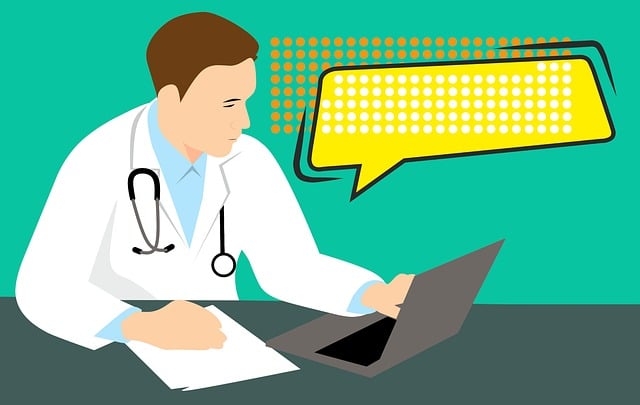Liability insurance is crucial for new drivers, shielding them from financial loss in case of accidents causing injury or property damage. It covers medical expenses and legal fees up to policy limits, offering protection against significant costs. Key components include bodily injury liability and property damage liability. New drivers often overlook its importance, but adequate coverage manages risks associated with driving. Cost factors include age, vehicle type, location, and claim history. State laws vary widely in liability insurance requirements, affecting selection decisions. For teen drivers, policies like Comprehensive General Liability Insurance (GRLI) protect against damages to others and their assets. Shopping for liability insurance requires understanding personal needs, comparing options, and reading fine print. The claims process involves exchanging information, documenting incidents, contacting insurers, and maintaining records. Establishing a strong insurance foundation ensures safety, financial security, and peace of mind on the road for new drivers.
Introducing our comprehensive guide on Liability Insurance tailored for new drivers. As young motorists navigate the roads, understanding liability coverage is paramount for their safety and financial protection. This article explores essential aspects, from deciphering policy nuances to avoiding common mistakes. We delve into state-specific regulations and offer tips on choosing the right policy, ensuring new drivers build a robust insurance foundation. Discover how to manage claims efficiently and gain insights into options specific to teenage drivers, empowering them to make informed decisions regarding their liability insurance.
Understanding Liability Insurance: What It Covers

Liability insurance is a crucial component of auto coverage for new drivers. It protects against financial loss in case of an accident where someone else is injured or their property is damaged. This type of insurance covers medical expenses, legal fees, and compensation for the harmed party, up to the limits specified in the policy. Understanding what liability insurance covers is essential for new drivers as it provides a safety net that can help them avoid significant financial burdens.
In terms of protection, liability insurance typically includes two main parts: bodily injury liability and property damage liability. Bodily injury liability covers medical expenses for anyone injured in an accident caused by the insured driver. Property damage liability, on the other hand, pays for repairs or replacement of damaged property owned by others, up to the policy limits. For new drivers, having this coverage can be a game-changer, ensuring that they are protected against unexpected and costly claims resulting from their driving actions.
Why New Drivers Need Comprehensive Coverage

New drivers, especially those just getting their first license, face unique challenges on the road. With limited experience and still developing skills, they are more prone to accidents and potential liabilities. Comprehensive coverage is crucial for protecting these novice drivers from significant financial burdens that can arise from an at-fault accident.
Liability insurance is a critical component of this protection. It covers damages to others’ property or injuries they sustain in an accident caused by the policyholder. For new drivers, who might be more susceptible to high-cost claims due to their inexperience, having liability coverage ensures that unexpected incidents won’t lead to substantial financial strain. It provides peace of mind, knowing that should an accident occur, there’s a safety net in place to manage potential legal and monetary liabilities.
Common Mistakes New Drivers Make Regarding Insurance

Many new drivers, excited to hit the road independently, often overlook the importance of adequate insurance coverage, especially when it comes to liability insurance. This is a critical mistake, as being properly insured can protect them from significant financial burdens in case of an accident. New drivers might assume that their basic car policy will suffice, but this is not always the case. Liability insurance specifically covers damages caused by the driver to others, including medical expenses and property damage, and is crucial for safeguarding both the driver’s assets and future stability.
Another common pitfall is underestimating the risks associated with driving. New drivers may believe they are expert drivers because they’ve passed their test, but experience is a valuable teacher. They might engage in risky behaviors like speeding or driving while distracted, which can lead to costly claims. Understanding the potential consequences and making informed choices about insurance options is essential for avoiding financial surprises down the line.
Factors Influencing Liability Premiums for Novices

Several factors play a significant role in determining liability premiums for new drivers. One of the primary considerations is the driver’s age and experience. Insurers often charge higher rates for younger drivers due to their lack of driving history, which may include impaired judgment or risk-taking behavior. Additionally, the type and model of vehicle driven can impact premium costs; sport utility vehicles (SUVs) or high-performance cars typically carry higher liability insurance requirements than more standard sedans.
Another influential aspect is the driver’s location and the area they regularly drive in. Urban areas with heavy traffic and a higher risk of accidents usually result in elevated premiums. Conversely, rural areas might offer lower rates due to fewer vehicles on the road and generally safer driving conditions. Furthermore, a driver’s claim history and the frequency of previous accidents or citations will significantly affect their liability insurance costs.
State-Specific Regulations and Their Impact on Liability

Liability insurance requirements vary significantly from state to state in the US, reflecting diverse legal frameworks and cultural nuances. These state-specific regulations directly impact how new drivers navigate the world of liability coverage. For instance, some states mandate minimum liability limits that determine the level of protection required for all drivers, while others offer more flexible options tailored to individual needs. Understanding these variations is crucial for new drivers aiming to secure appropriate liability insurance.
When choosing a policy, consider factors like population density, average traffic volumes, and local accident statistics—all influenced by state-level policies and laws. Each state’s approach to liability coverage can create unique challenges and opportunities, emphasizing the need for informed decisions.
Types of Liability Policies for Teenage Drivers

For teenage drivers, understanding liability insurance is a crucial step in navigating the roads safely. There are several types of liability policies designed to protect young drivers and their families from financial burdens in case of an accident. Comprehensive general liability insurance (GRLI) is one such option that covers damages to others’ property or injuries they sustain as a result of a collision caused by the insured driver. This policy includes both bodily injury liability and property damage liability, offering broad protection for various scenarios.
Another common type is specific liability coverage like personal liability insurance, which protects against claims for medical expenses and non-economic losses (e.g., pain and suffering) arising from an accident caused by the driver. It can also cover legal expenses if the insured person is sued. Insuring against these risks is essential for teenage drivers as their lack of driving experience may increase the likelihood of accidents, potentially leading to substantial financial liabilities.
How to Shop for the Best Liability Insurance Deals

When shopping for liability insurance, understanding your needs and comparing options is key. Start by evaluating your personal situation: what type of vehicle(s) do you own? What is your driving history? Do you have any prior claims or accidents? These factors will influence the rates offered by different insurers. Gather quotes from multiple providers to ensure you’re getting competitive prices. Look for companies that specialize in insuring new drivers, as they may offer tailored packages and discounts.
Don’t be afraid to ask about potential savings. Many insurance companies provide reductions for good students, safe driving courses completion, or bundling multiple policies (like auto and home). Reading the fine print is essential; understand what’s covered, exclusions, and any additional costs. Remember, the cheapest option might not offer adequate protection, so balance cost with comprehensive liability coverage to make an informed decision.
Claims Process: What New Drivers Should Know

When a new driver is involved in an accident, understanding the claims process is crucial. The first step is to exchange information with the other party, including names, contact details, and insurance information—a key aspect of liability insurance. It’s important to remain calm and document the incident by taking photos of damage, gathering witness statements, and noting down any relevant details.
The claims process typically begins by contacting their liability insurance provider. They will guide them through the steps, which may include filing a report with the police if necessary. New drivers should be prepared for potential back-and-forth communication with the insurer, adjusting companies, and even legal entities in complex cases. Keeping records of all correspondence and documentation is essential to ensure a smooth process and facilitate a swift resolution.
Building a Solid Insurance Foundation for Future Drivers

For new drivers, establishing a solid insurance foundation is crucial for their safety and financial security on the road. Liability insurance serves as a cornerstone in this foundation. It protects both the driver and others involved in an accident by covering damages to property and injuries sustained. This is particularly important given that young or inexperienced drivers are often at a higher risk of being involved in accidents due to lack of awareness or judgment.
By investing in comprehensive liability insurance, new drivers can ensure they meet legal requirements while minimizing potential financial burdens from accidents. This coverage provides peace of mind, knowing that medical bills, legal fees, and property damage repairs are managed according to the policy terms. It’s a responsible step towards building a safe and sustainable driving experience for the future.
